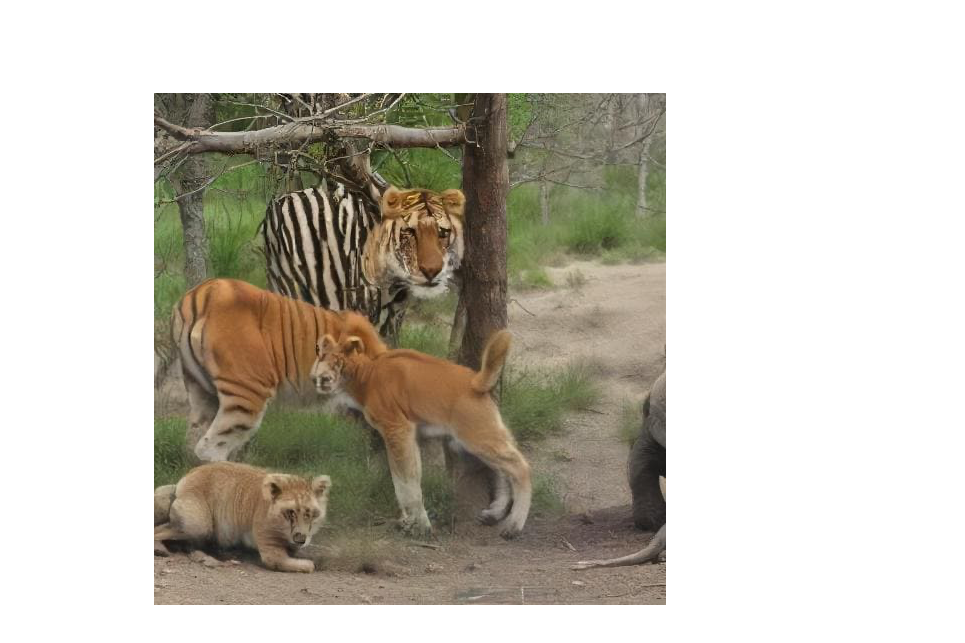



"Justice cannot be for one side alone, but must be for both"
Effectiveness of Anti-Wildlife Trafficking Treaties

Published on : 22/05/2024
View Count : (460)
Effectiveness of Anti-Wildlife Trafficking Treaties
EFFECTIVENESS OF ANTI-WILDLIFE TRAFFICKING TREATIES
Law Student,
Sastra Deemed University,
mailto:srinidhividhyamohan@gmail.com
Click here for copyrights policy
Introduction
Wildlife trafficking poses a grave threat to biodiversity and the survival of numerous species. The illegal trade in animals and their parts has far-reaching ecological, economic, and ethical implications, endangering not only the world's wildlife but also undermining the rule of law and global security. To address this pressing issue, International trade has established a web of treaties and agreements aimed at curbing wildlife trafficking. These anti-wildlife trafficking treaties, notably the Convention on International Trade in Endangered Species of Wild Fauna and Flora (CITES) and the United Nations Convention against Transnational Organized Crime (UNTOC), plays a critical role in shaping the global response to this crisis and they stand as the primary legal tools for combating the illicit trade in endangered species and their derivatives.
Keywords
Conservation of endangered species, sustainability, international cooperation, public awareness
Anti-wildlife trafficking:
The term Anti-wildlife trafficking (synonyms with the term trafficking in fauna and flora). It refers to efforts and initiatives aimed at preventing, combating, and ultimately stopping the illegal trade of wild animals and their products. This includes activities like poaching, smuggling, and selling of endangered species, as well as products derived from them, such as ivory, rhino horn, exotic pets, and more.[1]
For Instance:
Due to overfishing, destructive fishing for about 95% of coral reefs in the region are at risk.
Anti-wildlife trafficking treaties:
Anti-wildlife trafficking treaties are as follows:
CITES:
CITES is asserted as the Convention on International Trade In Endangered Species of Wild Fauna and Flora. It is the principle International legal Convention for regulating and restricting International trade in endangered species under Appendix I, II,(or) III. Article VIII of the Convention requires the state parties to take " appropriate measures" to prohibit and penalise trade in contravention of its provisions.[3]
Significance of CITES:
1.Conservation of Endangered Species: CITES helps protect species that are at risk of extinction due to over-exploitation.
example the African Elephant was facing severe population declines due to poaching for their ivory. The CITES ban on international ivory trade has been instrumental in curbing this threat.
2. Regulation of Trade: The convention regulates international trade through a system of permits and certificates. This ensures that species listed under CITES are not traded in a manner that is detrimental to their survival.
Example is the case of the Sturgeon fish, whose valuable caviar is regulated by CITES to prevent overharvesting.
3. Global Cooperation: CITES fosters international cooperation in conservation efforts. It encourages countries to work together to monitor and manage the trade of endangered species. Example the partnership between countries in combating illegal wildlife trade is exemplified in the joint operations of INTERPOL and CITES.
4. Legal Framework: CITES provides a legal framework for member countries to adopt measures to implement the convention. This includes penalties for illegal trade and the establishment of authorities responsible for enforcement.
United States v. Rana (2011)
In this case a wildlife trafficker was prosecuted under the U.S. Lacey Act for trading in protected species.
5. Education and Awareness: CITES promotes awareness about the importance of conservation and sustainable use of wildlife. It encourages public education programs and research on endangered species.
Example CITES has been involved in campaigns to raise awareness about the illegal trade of rhino horn.
6. Adaptability and Amendments: The convention can adapt to changing circumstances by amending its appendices to include or remove species. This allows for a dynamic response to emerging conservation challenges.
Example the recent inclusion of additional shark and ray species to Appendix II, to regulate their international trade.
7. Economic and Social Benefits: CITES contributes to sustainable development by ensuring that local communities benefit from the conservation of wildlife.
Example programs like community-based natural resource management, revenues from sustainable wildlife use can support local economies.[4]
Impact of International trade on Ivory after enactment of CITES:
1. Appendix I Listing: In 1989, CITES took a major step by moving all African elephants to Appendix I, which effectively banned international commercial trade in African elephant ivory. This decision was made in response to a surge in elephant poaching and illegal ivory trade.
2. Increased Public Awareness: CITES has played a role in raising global awareness about the issues surrounding the ivory trade. This increased awareness has contributed to public pressure for stronger measures to protect elephants and combat illegal ivory trade.
3. Innovations in Tracking and Technology: CITES has encouraged the development and implementation of technologies like DNA testing and Geographic Information Systems (GIS) to track the origin of seized ivory, which aids in law enforcement efforts.[5]
Protection given by CITES for the illegal trade of wildlife in Thailand:
UNTOC :
UNTOC is an abbreviation for the “United Nations Convention against Transnational Organized Crime”. It is also known as the Palermo Convention, named after the city in Italy where it was adopted in 2000. UNTOC is a multilateral treaty aimed at combating transnational organized crime, including human trafficking, drug trafficking, arms smuggling, and other forms of organized criminal activity.
The convention includes protocols that address specific areas of transnational organized crime, such as the Protocol to Prevent, Suppress and Punish Trafficking in Persons, Especially Women and Children, and the Protocol against the Smuggling of Migrants by Land, Sea, and Air. These protocols provide guidelines and mechanisms for countries to work together to prevent and combat these specific forms of criminal activity.
COMPONENTS :
UNTOC is comprised of three main components:
1. The Convention itself: This document sets out the general legal framework and principles for addressing transnational organized crime.
2. Protocols: UNTOC includes three protocols that address specific areas of organized crime:
3. Technical Assistance: UNTOC provides a framework for technical assistance and capacity-building to help countries effectively implement its provisions and combat organized crime.[7]
GOALS/IMPORTANCE
The primary goals of UNTOC and its protocols are to promote international cooperation, enhance the legal tools available to combat organized crime, and facilitate the exchange of information and intelligence among countries. UNTOC seeks to strengthen the rule of law and protect society from the serious threats posed by transnational criminal organizations.
Effectiveness in achieving these goals can vary depending on the commitment of individual countries to implement the treaty's provisions and protocols effectively, allocate resources, and collaborate internationally. Like many international agreements, the success of UNTOC relies on the willingness of participating nations to enforce its regulations and work together in the fight against transnational organized crime.[8]
SIGNIFICANCE
The United Nations Convention against Transnational Organized Crime (UNTOC), also known as the Palermo Convention, holds significant importance in addressing transnational organized crime. Its significance includes:
1. International Cooperation: UNTOC facilitates international collaboration among countries to combat transnational organized crime by providing a framework for legal and law enforcement cooperation.
2. Legal Framework: It establishes a comprehensive legal framework for member states to develop and enforce laws that target organized criminal activities such as human trafficking, drug trafficking, and money laundering.
3. Protection of Human Rights: UNTOC emphasizes the protection of human rights in the fight against organized crime, ensuring that law enforcement actions respect the rights and dignity of individuals.
4. Trafficking and Smuggling: UNTOC has protocols addressing specific issues like human trafficking and migrant smuggling, providing tools and mechanisms to combat these crimes effectively.
5. Enhanced Global Security: By addressing transnational organized crime, UNTOC contributes to global security and stability, reducing the impact of these criminal activities on societies and economies.[9]
CONFERENCE OF PARTIES
Along with the States parties, who are the actual participants, a range of observers, including signatories and non-signatories, the United Nations Secretariat, international organizations, and non-governmental organizations, attend the meeting.
With the use of the UNTOC Review Mechanism, which functions as a peer-review process, States Parties to the Convention and Protocols will be able to implement these instruments effectively, as well as identify and justify their particular needs for technical support and promote global cooperation.[10]
CONCLUSION :
In conclusion, the effectiveness of anti-wildlife trafficking treaties, such as CITES and UNTOC, is a vital component in the global effort to combat the illegal trade in endangered species and their products. These treaties have established crucial legal frameworks, fostered international cooperation, and raised public awareness about the urgent need to protect our planet's biodiversity. In the spirit of safeguarding our planet's rich and diverse ecosystems, we must continue to build upon the successes of these treaties, address their limitations, and reinforce the collective commitment to protect the world's endangered wildlife
[1] https://www.unodc.org/e4j/en/wildlife-crime/module-3/key-issues/criminalization-of-wildlife-trafficking.html
[2] https://www.unodc.org/e4j/en/wildlife-crime/module-3/key-issues/criminalization-of-wildlife-trafficking.html
[3] https://cites.org/eng/disc/what.php#:~:text=CITES%20
[4] https://en.m.wikipedia.org/wiki/CITES
[5] https://www.hsi.org/news-resources/african_ivory_trade/
[6] https://www.ncbi.nlm.nih.gov/pmc/articles/PMC3064566/
[7] https://en.wikipedia.org/wiki/United_Nations_Convention_Against_Transnational_Organized_Crime
[8] https://www.unodc.org/unodc/en/organized-crime/intro/UNTOC.html
[9]https://byjus.com/free-ias-prep/un-convention-against-transnational-organized-crime-
untoc/#:~:text=The%20idea%20behind%20having%20an,for%20tackling%20international%20organized%20crime.
[10] https://www.unodc.org/unodc/en/organized-crime/intro/conference-of-the-parties.html
Cite this article as
Ms. Srinithi M “Effectiveness of Anti-Wildlife Trafficking Treaties” Vol. I & Issue 2, Nyayavimarsha Law Journal, Pages 1 to 9 (22nd May 2024), available at https://nyayavimarsha.com/detail/effectiveness-of-anti-wildlife-trafficking-treaties
Journal Volume
You should always try to find volume and issue number for journal articles.


Nyayavimarsha
No. 74/81, Sunderraja nagar,
Subramaniyapuram, Trichy- 620020